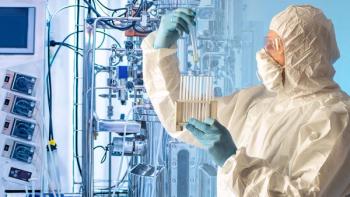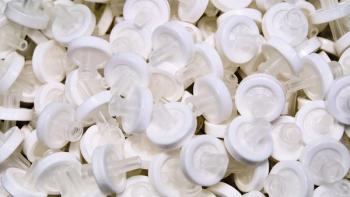
- BioPharm International-08-01-2016
- Volume 29
- Issue 8
Downstream Processing Continues to Worry CMOs
CMOs are working hard to improve performance by investigating new technologies for filtration and purification.
Downstream processing continues to be a significant pain point for contract manufacturing organizations (CMOs), and downstream-fueled bottlenecks don’t appear to show any signs of abating, according to BioPlan Associates 13th Annual Report and Survey of Biopharmaceutical Manufacturing Capacity and Production (1). In fact, nearly two-thirds (64%) of CMOs surveyed for the study report at least some bottleneck problems due to downstream processing.
Impact of downstream processing
Downstream processing problems are not unique to CMOs, of course. It seems, however, that contract manufacturers are being hit harder than biotherapeutic developers, perhaps because of their working with multiple products, and their clients’ demands for competitive performance.
More than one-quarter (27.4%) of CMOs surveyed said they are experiencing a serious bottleneck in capacity and overall production today due to downstream processing, a rate almost triple that of biotherapeutic developers (10.7%). And while almost 27% of biotherapeutic developers don’t have any bottlenecks at the moment due to downstream processing, only a third as many CMOs (9.1%) can say the same.
This is the third consecutive year in which CMOs have reported a considerably greater degree of downstream problems than biotherapeutic developers, and that could point to more systemic issues than simply the nature of the CMO business. CMOs are unlikely to take on business for which they don’t have adequate resources, so their continued troubles in this area could spell trouble for biotherapeutic developers. In fact, since the notable increase in capacity problems for CMOs due to downstream processing in 2014, biotherapeutic developers’ own problems have edged up, from 42.6% reporting “serious” or “some” capacity problems in 2014 to 48% in 2016 (see Figure 1).
Figure 1: Impact of downstream processing on overall capacity: Biotherapeutic developers vs. contract manufacturing organizations (CMOs). (Figure courtesy of author)
Chromatography and ultrafiltration
When it comes to specific steps that contribute to downstream-related capacity constraints, chromatography columns continue to be the main culprit. This year, 15.1% of all biomanufacturers surveyed reported “significant” or “severe” constraints arising from chromatography columns. On a more encouraging note, this figure has generally trended downwards in recent years (from 20.2% in 2008). Perhaps as a result, the industry’s demand for new chromatography products appears to have slightly abated. This year, chromatography products ranked 6 out of 23 new product development areas of interest measured, after sharing the top ranking last year out of 22 areas tracked. Not too surprisingly given the larger constraints they face, CMOs (36.8%) were more likely than biotherapeutic developers (27.5%) to put chromatography products among their top five areas of new product development interest.
Despite the downward trend in significant problems related to chromatography, chromatography columns remain a bigger headache than other steps. One such step is depth filtration, which has also declined in its own right as a contributor to capacity constraints. This year, 8% of respondents reported at least “significant” constraints due to depth filtration, down from 12.7% in 2008.
While chromatography columns and depth filtration are gradually declining in impact, ultrafiltration steps are trending up as a problem area. Ultrafiltration steps have led to “significant” or “severe” constraints for 9.4% of biomanufacturers, down slightly from last year’s high of 10.7% but nevertheless well above the 6.5% registered in 2008. In fact, the past two years have been the first in which more “significant” or “severe” problems have been reported from ultrafiltration steps than from depth filtration.
Single-use devices to the rescue?
To get a better sense of how the biopharmaceutical manufacturing market is positioning itself to deal with these problems, respondents were asked to identify actions they had implemented to improve downstream purification operations.
Among all survey respondents, the most common action taken was to cycle columns more frequently (50%), followed by:
- Optimizing running conditions (46.1%)
- Using or evaluating membrane-based filtration technologies (40.8%)
- Using or evaluating alternative ion-exchange technologies (39.5%)
- Investigating single-use, disposable downstream technologies (38.2%).
Fewer respondents this year reported taking multiple measures. This was particularly the case for developing downstream processes with fewer process steps (35.5%, down from 48.1%) and working with continuous chromatography purification such as simulated moving beds (13.2%, down from 22.2% in 2015).
At the same time, there is an increasing number of biomanufacturers actively identifying and assessing bottleneck points. The 32.9% reporting having done so this year is up from 22.4% in 2011, and marks the highest point so far. It appears that manufacturers are working harder to pinpoint the specific pain points to arrive at more targeted solutions.
Meanwhile a much larger proportion of respondents are investigating alternatives to protein A (27.6%) than actually switching to alternatives (6.6%), with this trend holding true for several years now.
Interestingly, two of the areas in which there were sizable declines in participation this year-investigating single-use products and developing processes with fewer steps-are CMO favorites. When respondents were segmented into two groups, CMOs and biotherapeutic developers, among CMOs, the most common ways of addressing downstream processing problems were to:
- Investigate single-use-disposable downstream technologies (66.7% of CMOs versus 34.3% of biotherapeutic developers)
- Develop downstream processes with fewer process steps (66.7% of CMOs, versus 31.3% of biotherapeutic developers).
Other actions taken by a majority of CMOs (each at a higher rate than biotherapeutic developers) were cycling more columns more frequently, using or evaluating membrane-based filtration technologies, and actively identifying/assessing bottlenecking points.
In general, CMOs appear to be implementing more actions than biotherapeutic developers to address their substantial downstream purification problems. In fact, the only six areas (of 19 identified) in which biotherapeutic developers show more enthusiasm than CMOs are:
- Using or evaluating alternative ion exchange technologies
- Process development to shorten cycle times
- Investigating alternatives to protein A
- Developing more efficient harvest/flocculation operations
- Investigating non-chromatographic separations (e.g., aqueous two-phase system [ATPS] , precipitation, crystallization, etc.)
- Implementing special handling such as freezing and precipitation.
CMOs’ passion for new technologies
CMOs have traditionally led the way in adoption of new technologies, and that continues to be the case in downstream purification technologies, too. CMOs and biotherapeutic developers were asked to identify the downstream purification technologies that they are considering this year. A majority of CMOs are considering:
- Use of high capacity resins
- In-line buffer dilution systems
- Single-use disposable tangential flow filtration (TFF) membranes
- Single use-prepacked columns.
Close to half of CMOs, meanwhile, are also considering using filters instead of resin chromatography. By contrast, no technology attained even 40% interest among biotherapeutic developers, who are likely more wedded to current systems and more cautious about adopting new technologies. Developers reserved their greatest consideration for buffer dilution systems/skids (38.1%) and membrane technology (also 38.1%).
Conclusion
Data show that downstream purification continues to worry the biomanufacturing industry. Downstream problems, however, are contributing to more serious bottlenecks for CMOs than for biotherapeutic developers, with almost two-thirds of CMOs reporting at least a “significant” impact on capacity and overall production. This could be seen as a leading indicator of future problems for biotherapeutic developers, whose problems are gradually increasing in their own right.
CMOs are trying out various approaches to tackle these issues, often at a greater rate than biotherapeutic developers. Some of the biggest gaps between these groups relate to developing processes with fewer steps and to using single-use equipment in downstream processing. Indeed, a majority of CMOs are considering using single-use disposable TFF membranes and single use-prepacked columns. It remains to be seen the extent to which these will help. Downstream continues to fail to keep up with the recent advances in upstream yield and titers.
Reference
1. BioPlan Associates, 13th Annual Report and Survey of Biopharmaceutical Manufacturing Capacity and Production (BioPlan Associates, Inc. Rockville, MD., April 2016).
Article Details
BioPharm International
Vol. 29, No. 8
Pages: 10–13
Citation:
When referring to this article, please cite as E. Langer, "Downstream Processing Continues to Worry CMOs," BioPharm International 29 (8) 2016.
Articles in this issue
over 9 years ago
Generating a Fully Processed Antibodyover 9 years ago
Perfusion in the 21st Centuryover 9 years ago
Protein Impurities Pose Challengesover 9 years ago
All Buzz, No Biteover 9 years ago
Analysis of Glycosylation in Biosimilarsover 9 years ago
Quality Manufacturing Key to Stemming Drug Shortagesover 9 years ago
One Strategy for Updating an Aging Facilityover 9 years ago
Integrating Single-Use Systems in Biopharma Manufacturingover 9 years ago
The Flexibility of Small-Scale Single-Use Bioreactor SolutionsNewsletter
Stay at the forefront of biopharmaceutical innovation—subscribe to BioPharm International for expert insights on drug development, manufacturing, compliance, and more.





